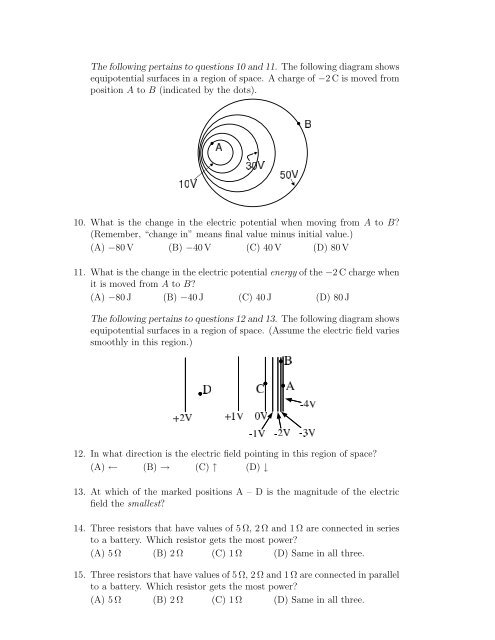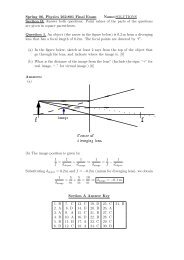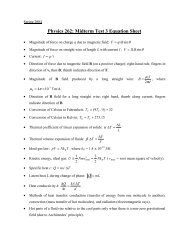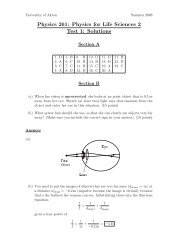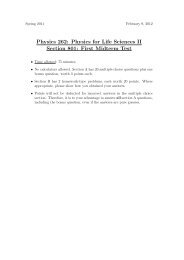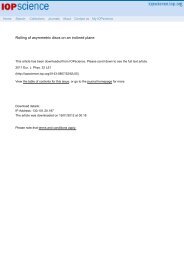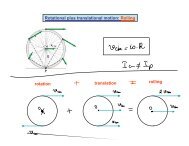Physics 262 Physics for Life Sciences II Second Exam
Exam 2 (PDF) - Physics
Exam 2 (PDF) - Physics
- No tags were found...
Create successful ePaper yourself
Turn your PDF publications into a flip-book with our unique Google optimized e-Paper software.
The following pertains to questions 10 and 11. The following diagram showsequipotential surfaces in a region of space. A charge of −2 C is moved fromposition A to B (indicated by the dots).10. What is the change in the electric potential when moving from A to B?(Remember, “change in” means final value minus initial value.)(A) −80 V (B) −40 V (C) 40 V (D) 80 V11. What is the change in the electric potential energy of the −2 C charge whenit is moved from A to B?(A) −80 J (B) −40 J (C) 40 J (D) 80 JThe following pertains to questions 12 and 13. The following diagram showsequipotential surfaces in a region of space. (Assume the electric field variessmoothly in this region.)12. In what direction is the electric field pointing in this region of space?(A) ← (B) → (C) ↑ (D) ↓13. At which of the marked positions A – D is the magnitude of the electricfield the smallest?14. Three resistors that have values of 5 Ω, 2 Ω and 1 Ω are connected in seriesto a battery. Which resistor gets the most power?(A) 5 Ω (B) 2 Ω (C) 1 Ω (D) Same in all three.15. Three resistors that have values of 5 Ω, 2 Ω and 1 Ω are connected in parallelto a battery. Which resistor gets the most power?(A) 5 Ω (B) 2 Ω (C) 1 Ω (D) Same in all three.


